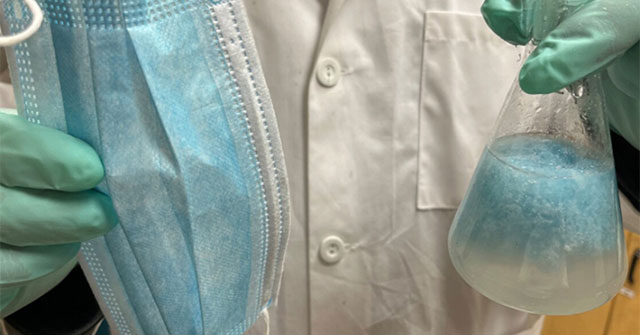Old medical masks are cut into fibers, treated with chemicals, and then added to cement – the binding component in concrete.

Scientists cut old medical masks into fibers and treat them with a graphene oxide solution before mixing them with cement. Photo: Washington State University
In recent years, masks have become a common type of waste. A team of experts at Washington State University (WSU) has found a new use for them: enhancing the durability of concrete, according to a report by New Atlas on April 28. The new research was published in the journal Materials Letters.
Previous studies have shown that concrete tends to crack less when mixed with tiny reinforcing fibers. With this information, the WSU team questioned whether the polypropylene or polyester fibers in discarded masks could be used for this purpose.
To find the answer, they began processing old masks by removing the metal nose strips and cotton ear loops, then cutting the remaining material into fibers ranging from 5 mm to 30 mm in length. Next, the fibers were treated with a graphene oxide solution. This substance forms a coating on the fibers, increasing their surface area and helping them bond with the commonly used Portland cement. The fibers were added to the cement – the binding component of concrete – at a volume of 0.1%.
After one month of curing, the fiber-reinforced cement showed a tensile strength increase of 47% compared to untreated Portland cement. The addition of the fibers also slightly reduced compressive strength by about 3%. “This research introduces a technology that transforms used masks from waste into something useful and valuable,” said Professor Xianming Shi, the lead researcher.
Last year, a study conducted by a team of experts at RMIT University in Australia also found that mask fibers help enhance the durability of asphalt and other road materials.


















































